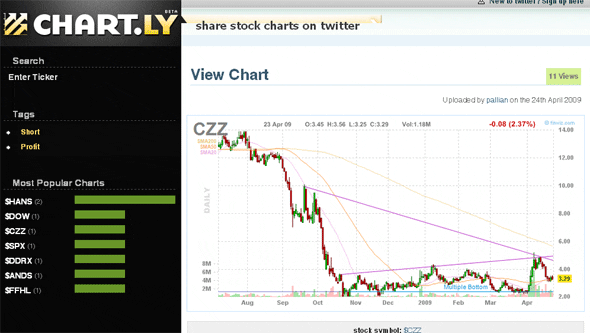There has been a lot of buzz about the use of social media to inform trading and investment decisions in recent years, with some claiming that, if properly harnessed, big data from social media platforms could prove to be some kind of crystal ball for the markets.
Certainly, this was the thinking behind the ‘Absolute Return Fund’ – a $40.5 million hedge fund based solely on a strategy of using social media data to inform trades. The fund, which was started in late 2010 by London-based investment firm Derwent Capital Markets, based its investments on an analysis of 10% of the 10 million tweets that were then being sent on a daily basis on Twitter.
Using trading algorithms and sentiment analysis techniques to mine tradable data from the Twitter firehose, the fund returned an impressive 1.86% in its first month of trading, a result that beat both the market and the average hedge fund. Then, it abruptly shut down, citing a near-total lack of investor interest in what was then an innovative approach to trading.
With investors tending towards a certain conservatism when it comes to placing their fortunes in the hands of hedge fund managers, it is perhaps inevitable that such a young and relatively unproven strategic approach would fail to attract interest from investors. After all, if you had several million dollars to invest, would you place it with a hedge fund that had several years of market-beating returns behind it, or with a brand new, totally unproven hedge fund with little more than an academic study and some new-tech hype to recommend it?
Although the idea of using social media data to inform investment decisions was relatively new at this point, it wasn’t completely unheard of. For example, Stocktwits – a popular third-party Twitter app that uses “cashtags” (eg $GOOG) to filter stock-related tweets and condense them into the form of specialist forums, was already widely used by traders to help inform their decisions. Other Twitter-based services for traders available at the time included Chart.ly, a Stocktwits add-on that enabled users to upload financial charts, and Covestor, which links brokerage accounts to Twitter to enable traders to share their trades with others in the form of tweets, making Twitter into one giant social trading network.
Social data proves its worth
While many were quick to see the potential of social media data as an investment tool, it wasn’t until a study performed by three computer science students at Cornell – namely Johan Bollen, Huina Mao and Xiao-Jun Zeng showed that a technique for monitoring emotion-related words in tweets was 87.8% accurate in predicting the daily up and down changes in the closing values of the Dow Jones Industrial Average.
While Derwent were the first to pounce on this new strategy and base a hedge fund around it, they weren’t the only firm to be making such plans. For example, MarketPsy Capital, a hedge fund management firm specialising in sentiment analysis and market psychology, were also said to be preparing to launch a fund based around a similar idea. Also, the Financial Times reported that a Japanese hedge fund that analysed sentiment in blogs was in the process of being set up at the time of Derwent Capital’s Absolute Return Fund launch.
Needless to say, the buzz around social media-based hedge funds subsided almost immediately after Derwent’s Twitter fund was quietly liquidated. None of the other social media funds that were being mooted ever saw the light of day. Derwent founder Paul Hawtin’s next project, DCM Capital, which launched a trading platform based on the technology used by the Absolute Return fund, was also a failure.

The second coming?
In spite of the high-profile failures of Derwent and DCM, Hawtin wasn’t to be deterred, launching a new fund management firm, Cayman Atlantic, in 2013.
The new firm uses similar technology to the Derwent fund, but instead of focusing solely on sentiment analysis – which even the most optimistic early adopter would admit was a pretty wacky idea in hindsight – it seeks to use social media to detect market-moving news before it breaks. Speaking of his new venture to waterstechnology.com, Hawtin had the following to say:
“It’s different in one respect, from a trading side, in that we’re not just using sentiment analysis but we’re also using social media to uncover news before it breaks. For example, if you look at the AP tweet that came out, that’s a really good example of where our systems can monitor, pick up and alert us to tweets that our algorithms think contain information which will affect a share price or an index. We can then make an assessment when we’re alerted, which is pretty much instantaneous from the moment that tweet comes out, and then place a trade on an equity, index or commodity, based on the direction we think the asset will move once that news breaks in the global press.”
With social media transforming the way that news breaks, most major news events make their way onto Twitter quite some time before they are announced via official news channels. There is a good reason for this – official news channels have to check their facts before they announce something as being news, because if they are wrong, they could get into a lot of trouble. Twitter users, on the other hand, are pretty much unaccountable, and for every news story that breaks on Twitter an hour before the official announcement, there are hundreds of groundless rumours being propagated by the often anonymous users of social media.
However, this all plays into the old trading adage of ‘buy the rumour, sell the news’. What technologies such as those employed by Cayman Atlantic and service providers such as DataMinr do is to use algorithms to find out quickly about potentially market-moving rumours and filter out the most unreliable data to find out, with a useful enough degree of accuracy, the news between 30 minutes and an hour before the official announcement. This, as Hawtin explains, can be extremely valuable to a trader:
“An example is Carnival Cruises,” he recalls. “They had a cruise ship earlier in the year where 120 people on board caught the norovirus. It came into the port, and the Miami Herald put out a tweet that they’d picked up information from a passenger saying that the ship had a severe outbreak. Forty minutes later it went mainstream and the share price of the cruise company dropped 2.9 percent.”
While Hawtin is a keen advocate of this technology, he isn’t blind to the potential issues it raises, particularly in terms of the (un)reliability of the information it turns up, which is why he insists that all the trading decisions are made by human traders. Perhaps his experience with Derwent’s social sentiment stategy, which perhaps came across as being more automated than it actually was, has informed his newfound emphasis on the judgement of human traders.
“I do think that there is the potential to have a fully autonomous system in the future, but I’m not comfortable with having that at this moment,” Hawtin argues. “I’d rather have traders assessing the information they’re alerted to. Sometimes it may take five or ten minutes to make a decision, but I’d rather have that human layer.”
Perhaps the main difference between Hawtin’s new venture and the doomed Derwent Capital project is the fact that Cayman Atlantic isn’t a fund. Instead, it operates managed trading accounts with a minimum deposit of £100,000, which should help it avoid running into the same problems as its predecessor.
“Derwent was a collective investment scheme, and the problem with that is that it’s a costly vehicle to run. You’re looking at around £30-40,000 per month taking in the service providers such as auditors, prime brokers and others. There are certain minimum requirements that you need to meet to make it commercially viable, and you’re looking at £15-20 million-plus.”
“I think one of the problems with DCM Capital is that we were almost a little bit too early. I don’t think the industry had properly really accepted social media, especially financial services, but we are two years on now, and I really feel there is a great opportunity for an investment banking firm to use this technology,” he says. ” And I think we are going to be one of the first ones.”
I am a writer based in London, specialising in finance, trading, investment, and forex. Aside from the articles and content I write for IntelligentHQ, I also write for euroinvestor.com, and I have also written educational trading and investment guides for various websites including tradingquarter.com. Before specialising in finance, I worked as a writer for various digital marketing firms, specialising in online SEO-friendly content. I grew up in Aberdeen, Scotland, and I have an MA in English Literature from the University of Glasgow and I am a lead musician in a band. You can find me on twitter @pmilne100.










































